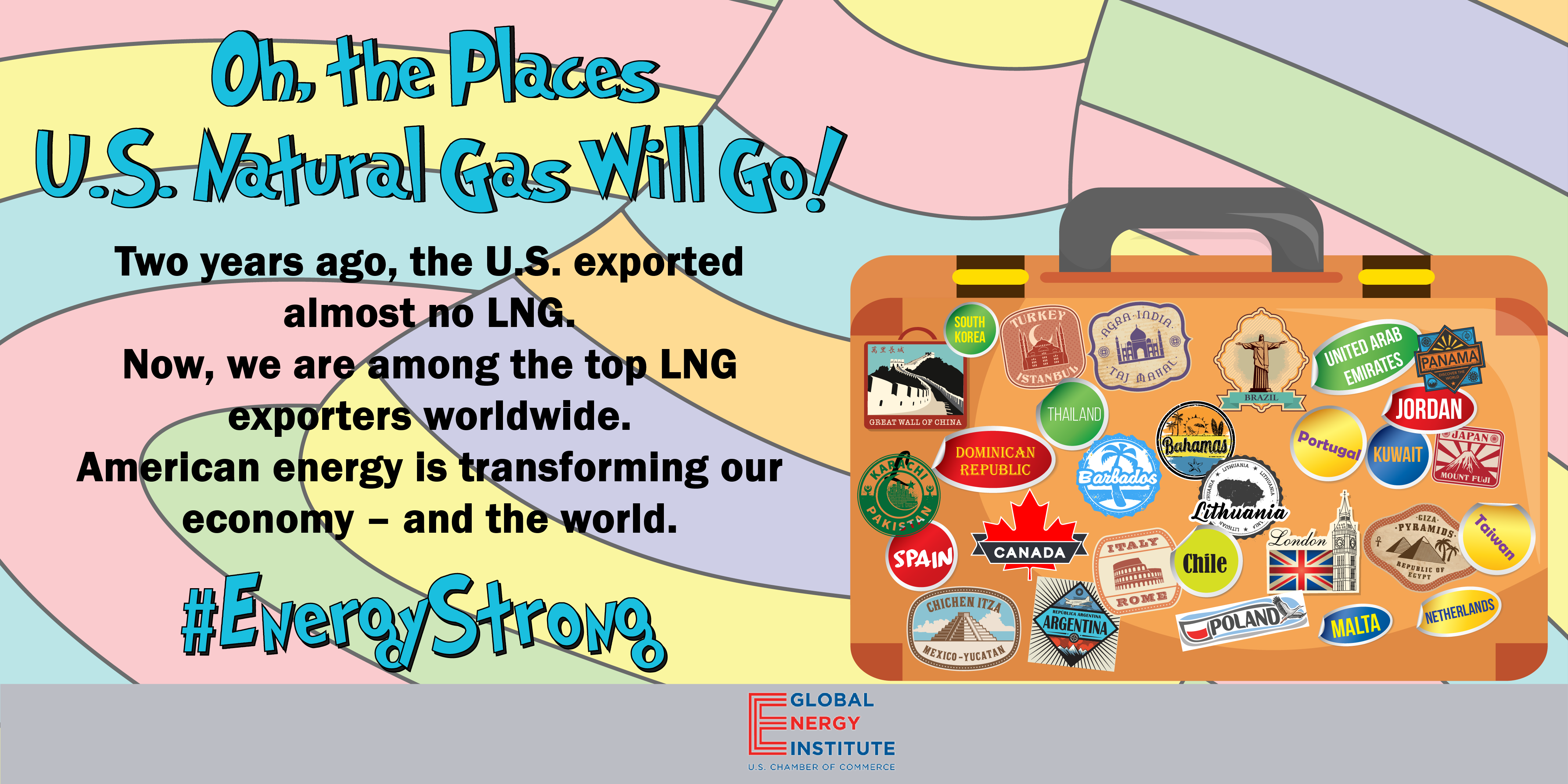As the energy leaders from across the globe converge on Washington, DC this week for the World Gas Conference, it is fitting that we recognize the extraordinary growth of the liquefied natural gas (LNG) industry in the United States over the past year. Just this year, the Cove Point LNG export terminal opened in Maryland, and is already providing secure and affordable natural gas to customers in Europe, Asia and elsewhere. More American LNG has also been streaming out of Cheniere’s Sabine Pass terminal in Louisiana, destined for locations as near as Mexico and as far as South Korea.
The list of LNG export destinations for American supplies just keeps growing. Recently, Panama joined the ranks of countries that have imported LNG from the United States. Opening a brand-new import terminal at Costa Norte, the country’s first ever LNG delivery came from Cheniere’s Sabine Pass facility.
According to the Energy Information Administration (EIA), a record number of countries imported LNG from the United States in 2017. A total of 27 countries received natural gas from the U.S., including several first-time customers: the Bahamas, Lithuania, Malta, the Netherlands, Pakistan, Poland, Thailand and the United Kingdom.

Our largest customers in 2016 continued to increase their demand for American gas as well. Purchases by China rose from 17.2 billion cubic feet (bcf) in 2016 to 103.4 bcf in 2017, making a sizable dent in the trade deficit. For context, just one billion cubic feet of LNG is enough natural gas to power the entire state of Delaware for a whole week.
Just this week China overtook Japan to become the largest importer of natural gas. China’s demand growth is staggering when considering it didn’t even start importing gas until 15 years ago.
U.S. Commerce Secretary Wilbur Ross praised the increased exports in an interview with CNBC, saying that the imports were:
“the best way, in my view, to cut the trade deficit… You saw the number of LNG deals we got with the Chinese… it’s huge and immense!”
Japan also bolstered its imports of American gas, quadrupling the amount it purchased in 2017 over the prior year. But Mexico was the biggest returning customer, jumping from just 27.4 bcf in 2016 to over 140.3 bcf in 2017. South Korea was close behind as our second-best customer in 2017, importing 130.2 bcf in the same year.
The impact of this burgeoning industry on the overall U.S. economy has not gone unnoticed, either. In recent months, a number of studies have shown that the United States is experiencing – and will continue to experience – an increase in job opportunities, higher GDP and improved trade balances thanks to the LNG industry.
In April 2018, LNG Allies – a coalition representing the wider industry – commissioned a report examining the economic impacts of LNG in the United States to be conducted by economists at ICF Consulting. The study found that the LNG industry can directly and indirectly support between 205,000 and 432,000 American jobs every year through 2050. Furthermore, the industry is estimated to contribute between $23 billion and $45.7 billion to the nation’s GDP each year through mid-century.
More recently, the U.S. Department of Energy released a new study assessing how the US LNG industry could fare in the global market over the coming decades. Their analysis finds that U.S. exports will most likely be around 20.5 bcf per day by 2030, and that number is likely to rise to 30.7 bcf per day by 2040. Over the coming decades, the price of producing U.S. LNG is highly likely to stay well below $7 per million British Thermal Units of energy ($/mmBTU), making the United States a consistently competitive supplier of natural gas to regions where it is historically priced at well over $7/mmBTU, such as in Europe and East Asia.
We can forecast with a great deal of optimism that the U.S. LNG industry is not only growing today, but is here to stay – much to the benefit of Americans across the country who will reap their fortunes from this vibrant industry. The places LNG will go will surely enhance the energy security of allies and trading partners while also reducing our trade deficit here at home. As Secretary of Energy Rick Perry wrote in his foreword to our 2018 International Index of Energy Security Risk,
“by exporting its energy, the U.S. is exporting freedom of choice and all that comes with it. The United States is helping empower its friends and allies, liberating them from dependence on nations that wield their energy resources as a political weapon.”
That’s a very good thing for our economy, global security, and the environment.

